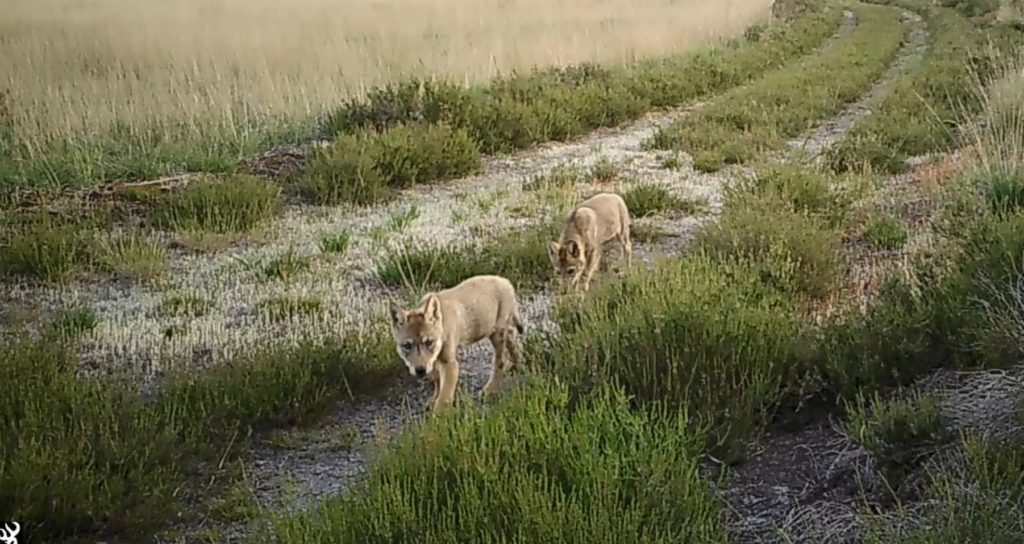The wolves August and Noëlla had at least five cubs this year, according to an announcement from the Institute for Nature and Forest Research (INBO).
The updates on the wolves are gleaned from nature cameras, which occasionally catch the popular predators.
August and Noëlla are regularly spotted in the Flemish province of Limburg in Belgium, and last April it was revealed that Noëlla was pregnant.
INBO has released some of the video footage they captured of the wolf family, but no images where all five cubs are visible, as the surroundings in those clips would make their location too easily identifiable to poachers.
For the same reason, they also often delay the release of news about the wolf family.
“This year Noëlla was already noticeably pregnant in photos from the end of March,” the announcement from INBO said.
“Around mid April she was in full term. On 18 April, a typical waggling trail with small steps indicated that she had not yet given birth, and on 20 April she was slim again in the picture. So the birth date of the new generation was around 19 April.”
Just like last year, INBO did their utmost to disturb the wolves as little as possible and not to cause any disturbance of the nest, they said.
The first picture of a cub was recorded by a nature camera on 26 May, and the next day two cubs were in the images, in the company of their mother.
Early in the morning on 13 June, forester Ernesto Zvar was able to count four cubs in the company of a yearling.
Over the following two weeks, the cameras recorded three cubs, but on 27 June, a camera captured the mother and five cubs.
“The three surviving cubs of 2020 have become yearlings,” said INBO.
“One of them seems to have left this spring, perhaps shortly before the new cubs were born. This yearling was easily distinguished from the others by his distinctive coat pattern. It was also a very large animal - in spring it was already bigger than its father August.”
INBO hasn’t spotted this young wolf for months, but hopes that they’ll discover his genetic fingerprint somewhere in Europe over the coming months.
The two other yearlings mostly kept to the immediate vicinity of their parents and the new cubs, often hunting together with the parents, or taking care of the new cubs.

